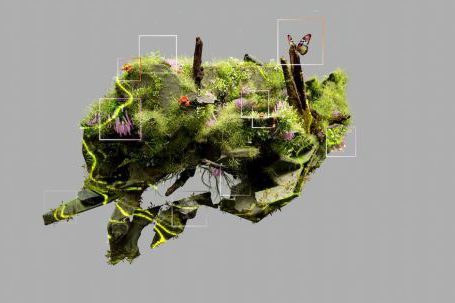As conservationists, our playground is the vast and diverse world of terrestrial ecosystems. These ecosystems, encompassing everything from forests and grasslands to deserts and wetlands, are crucial for the survival of countless plant and animal species. In this article, we will explore the importance of terrestrial ecosystems for conservation efforts and the challenges faced by those working to protect them.
Biodiversity Hotspots: Where Life Thrives
Terrestrial ecosystems are often referred to as biodiversity hotspots, and for good reason. These areas are teeming with life, hosting a wide array of species that have evolved to thrive in their specific habitats. From the lush rainforests of the Amazon to the harsh deserts of the Sahara, each ecosystem offers a unique set of conditions that shape the plants and animals that call it home.
Conservationists recognize the incredible value of biodiversity hotspots, as they are home to a disproportionate number of species found nowhere else on Earth. Protecting these areas is vital for preserving the planet’s biological heritage and ensuring the survival of endangered species.
Threats to Terrestrial Ecosystems
Unfortunately, terrestrial ecosystems face numerous threats that put their biodiversity at risk. Human activities such as deforestation, habitat destruction, and pollution are major contributors to the degradation of these ecosystems. As populations grow and demand for resources increases, pressure on terrestrial ecosystems intensifies.
The loss of habitat is particularly devastating for many species. When forests are cleared for agriculture or urban development, countless plants and animals lose their homes. This disruption can lead to the decline or extinction of species that rely on specific habitats for survival.
Conservation Strategies: Protecting and Restoring Ecosystems
Conservationists employ a variety of strategies to protect and restore terrestrial ecosystems. One of the most effective approaches is the establishment of protected areas, such as national parks and nature reserves. These designated spaces provide a safe haven for biodiversity, allowing ecosystems to function naturally and species to thrive.
In addition to protected areas, conservationists also work to restore damaged ecosystems. Through reforestation efforts, for example, degraded forests can be revitalized, providing habitat for species that were displaced. Restoration projects aim to recreate the conditions necessary for ecosystems to recover and regain their biodiversity.
Engaging Local Communities: The Key to Success
Successful conservation efforts in terrestrial ecosystems often involve engaging and collaborating with local communities. These communities, who live in close proximity to the ecosystems, have valuable knowledge and insights that can contribute to effective conservation strategies. By involving local residents in decision-making processes and providing them with alternative sustainable livelihood options, conservationists can foster a sense of ownership and stewardship among the people who depend on these ecosystems.
Conclusion: Protecting Our Playground
Terrestrial ecosystems are not only a playground for conservationists but also a vital part of our planet’s natural heritage. They support a vast array of life and provide essential ecosystem services, such as clean air and water. However, these ecosystems are under threat from human activities, and urgent action is needed to protect and restore them.
Conservationists play a crucial role in safeguarding terrestrial ecosystems, employing strategies such as creating protected areas and engaging local communities. By working together, we can ensure the long-term survival of these diverse and invaluable ecosystems, preserving them as a playground for both present and future generations of conservationists.





